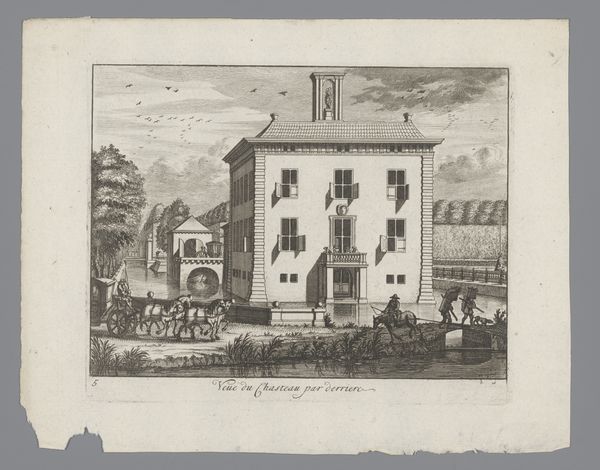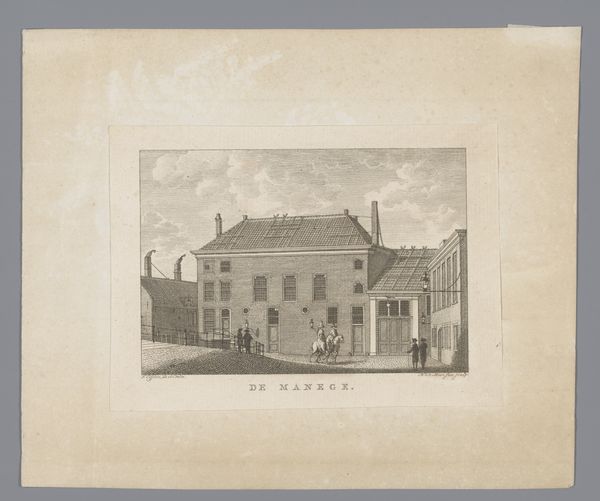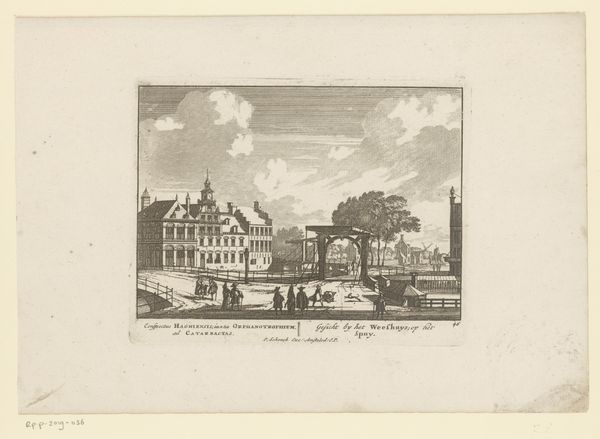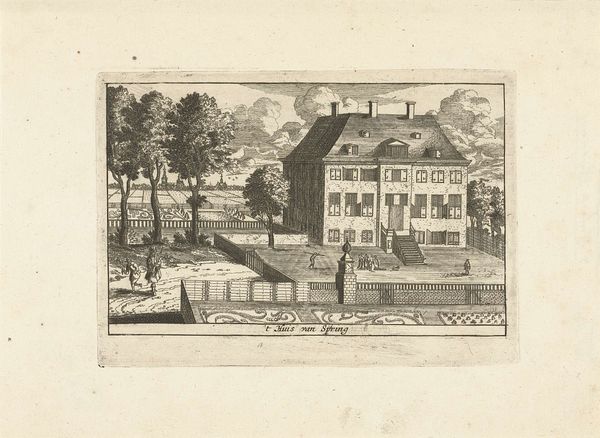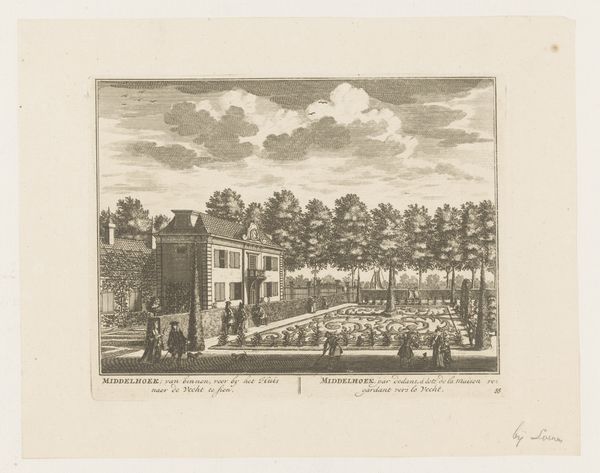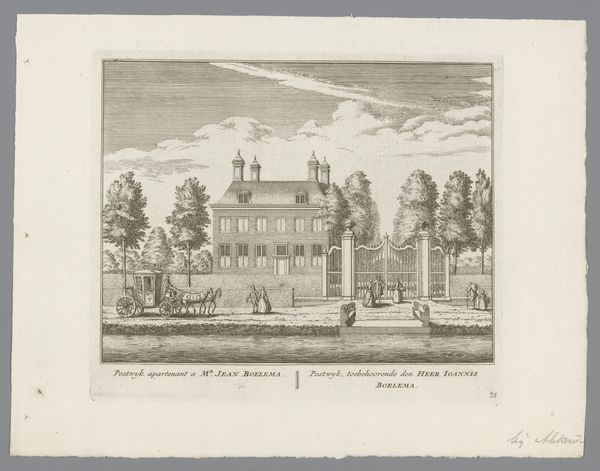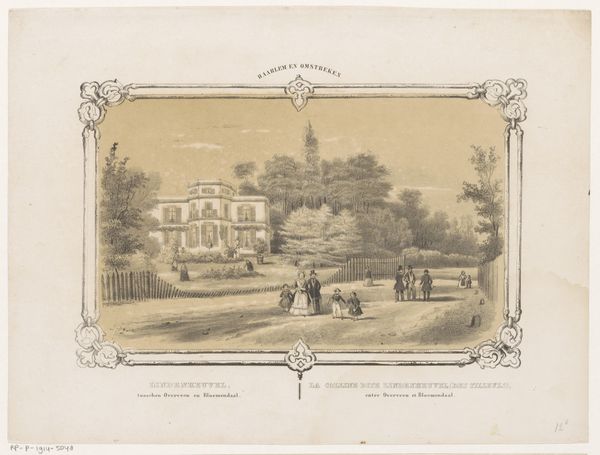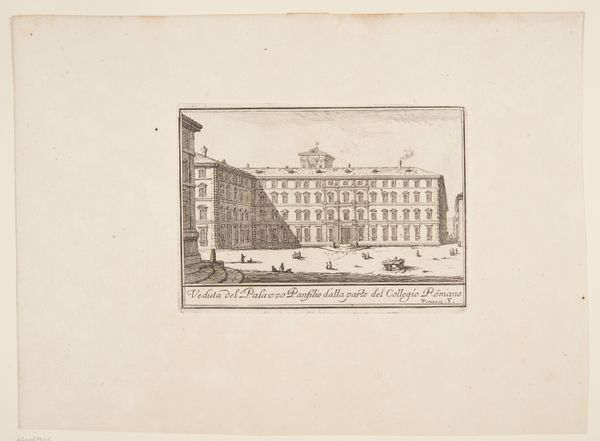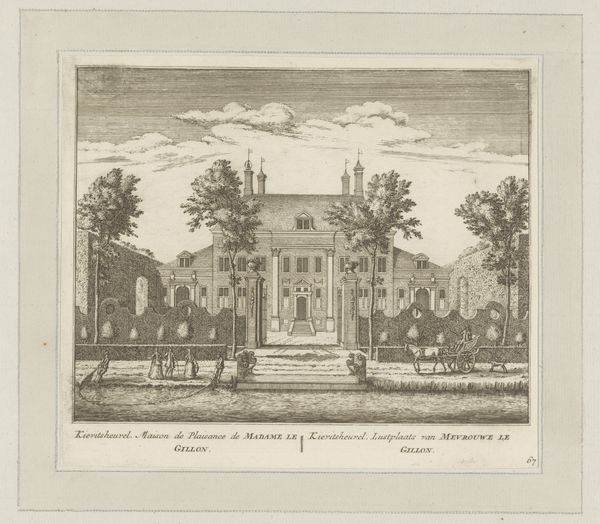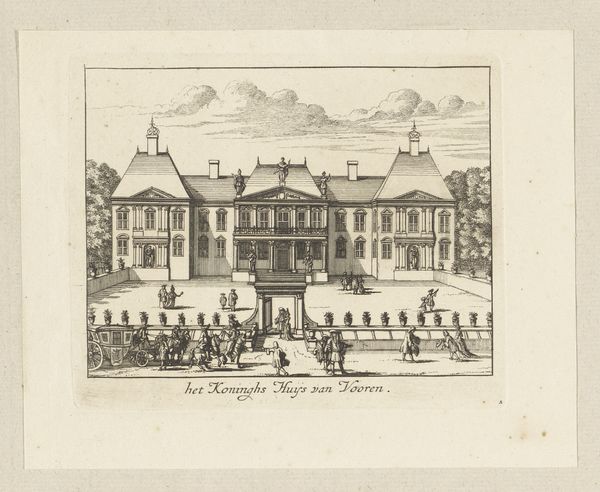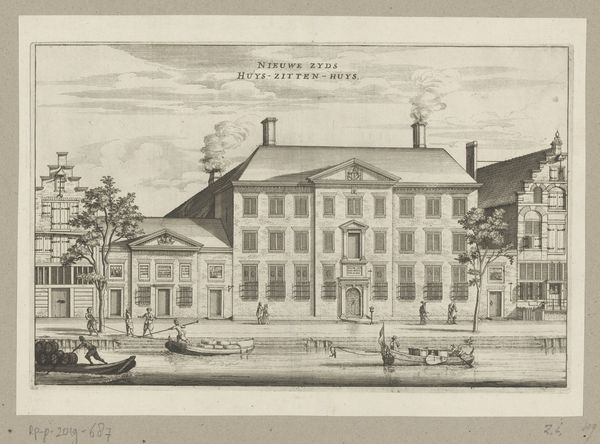
print, etching, engraving, architecture
#
baroque
# print
#
etching
#
old engraving style
#
landscape
#
cityscape
#
engraving
#
architecture
Dimensions: height 129 mm, width 160 mm
Copyright: Rijks Museum: Open Domain
Joseph Mulder etched this view of Castle Gunterstein sometime between 1658 and 1718, capturing the architectural essence of its time. The symmetrical facade and manicured gardens reflect a human desire to impose order on nature. The statue atop the castle draws the eye, a miniature deity presiding over the estate. Statues have served as potent symbols of power and cultural values since antiquity. Consider the Winged Victory of Samothrace, a symbol of triumph and divine favor, or the stoic figures of Roman emperors embodying authority and governance. Here, the statue is a motif, evolving across time and cultures, continually reshaped by collective memory and societal ideals. We can observe the image of a statue is a non-linear, cyclical progression, resurfacing and evolving in different historical contexts.
Comments
No comments
Be the first to comment and join the conversation on the ultimate creative platform.
